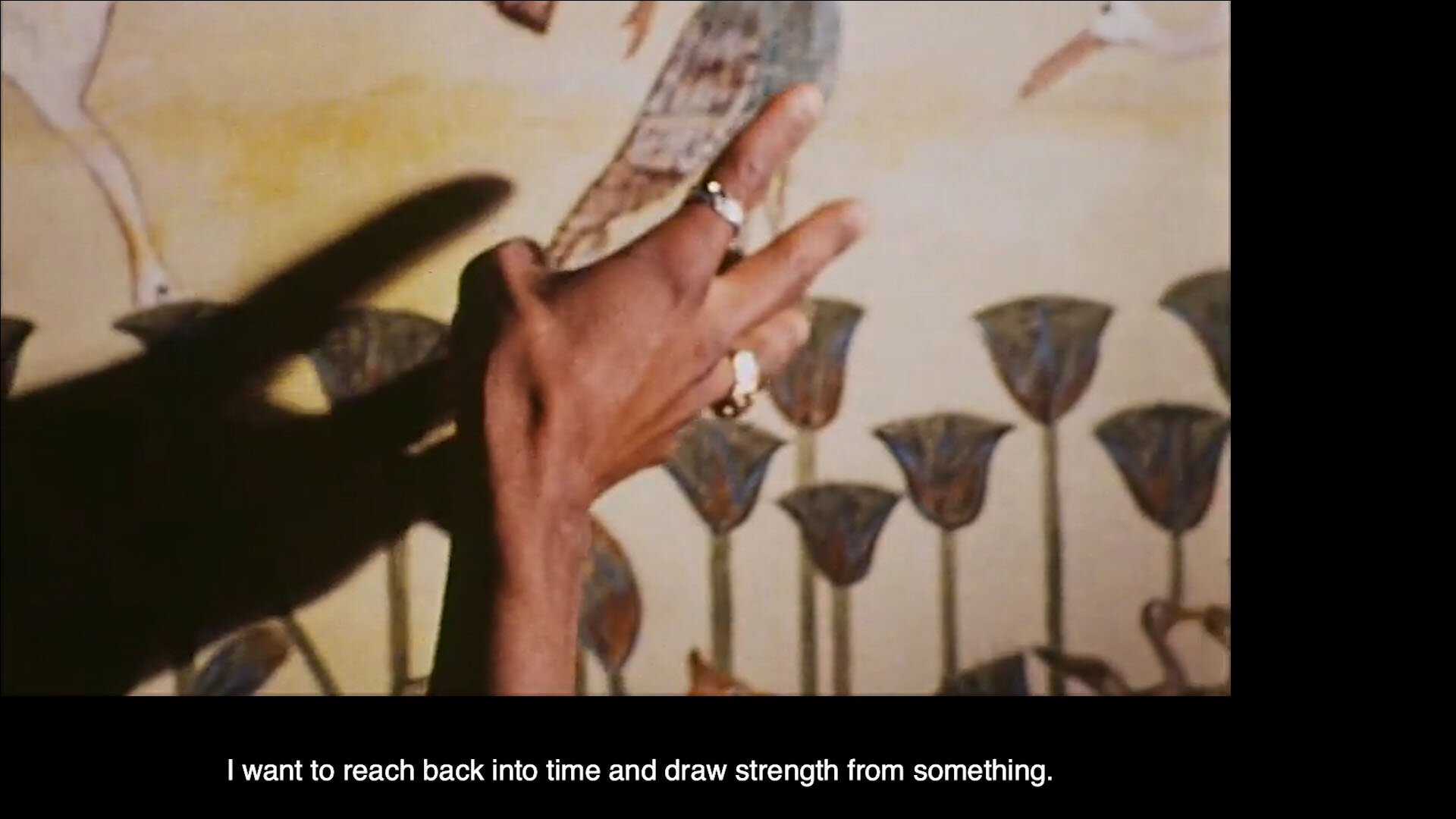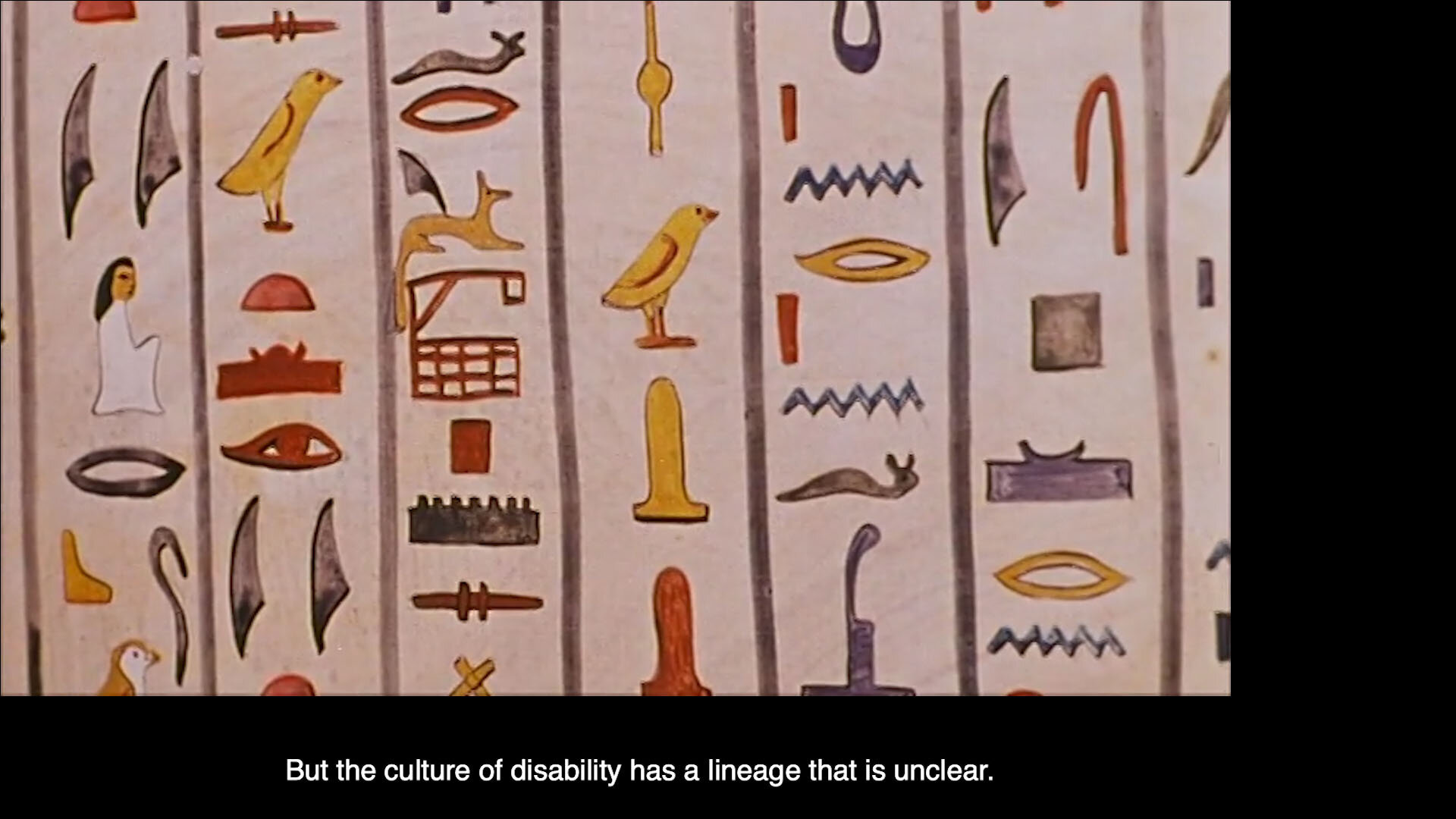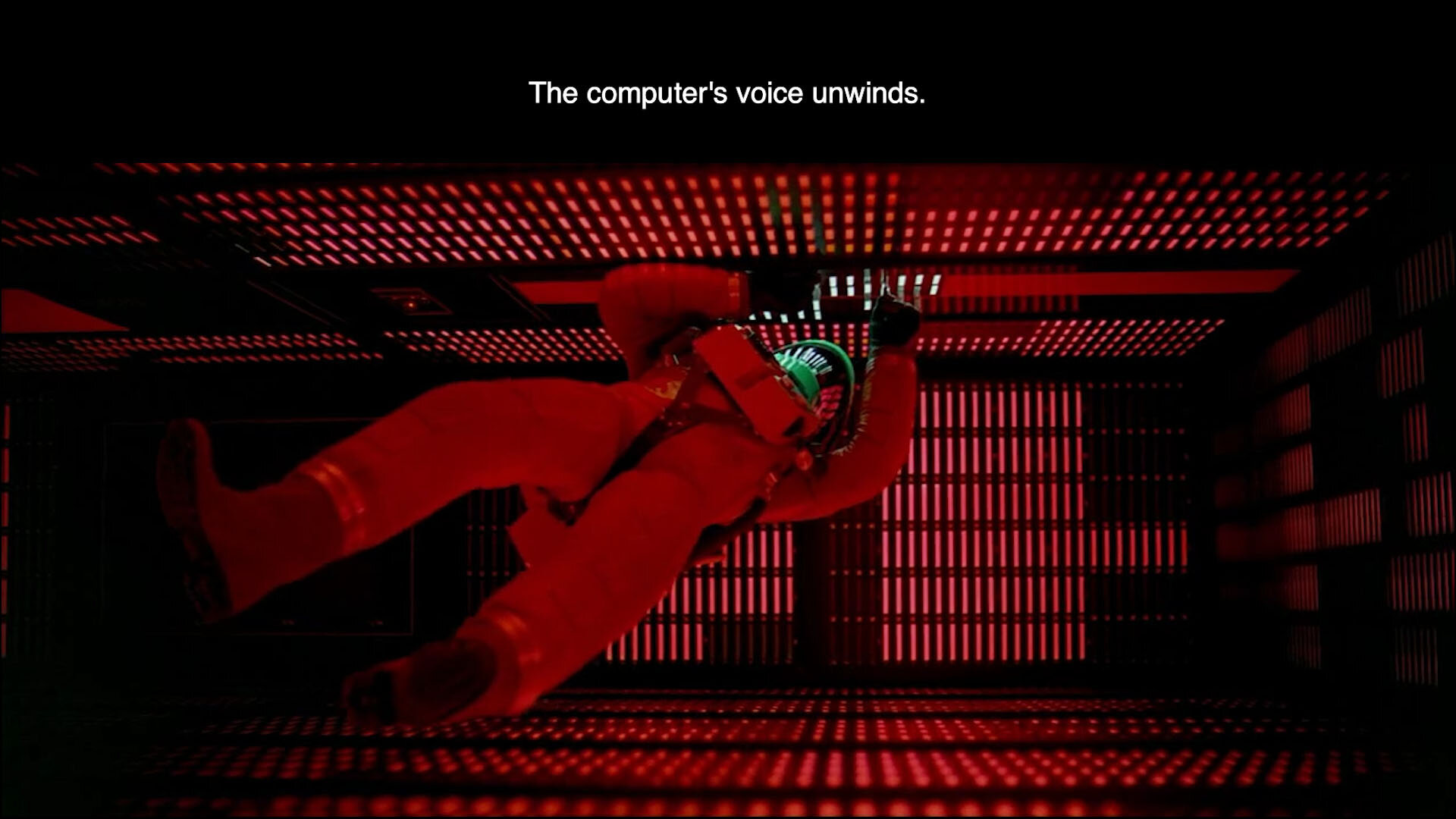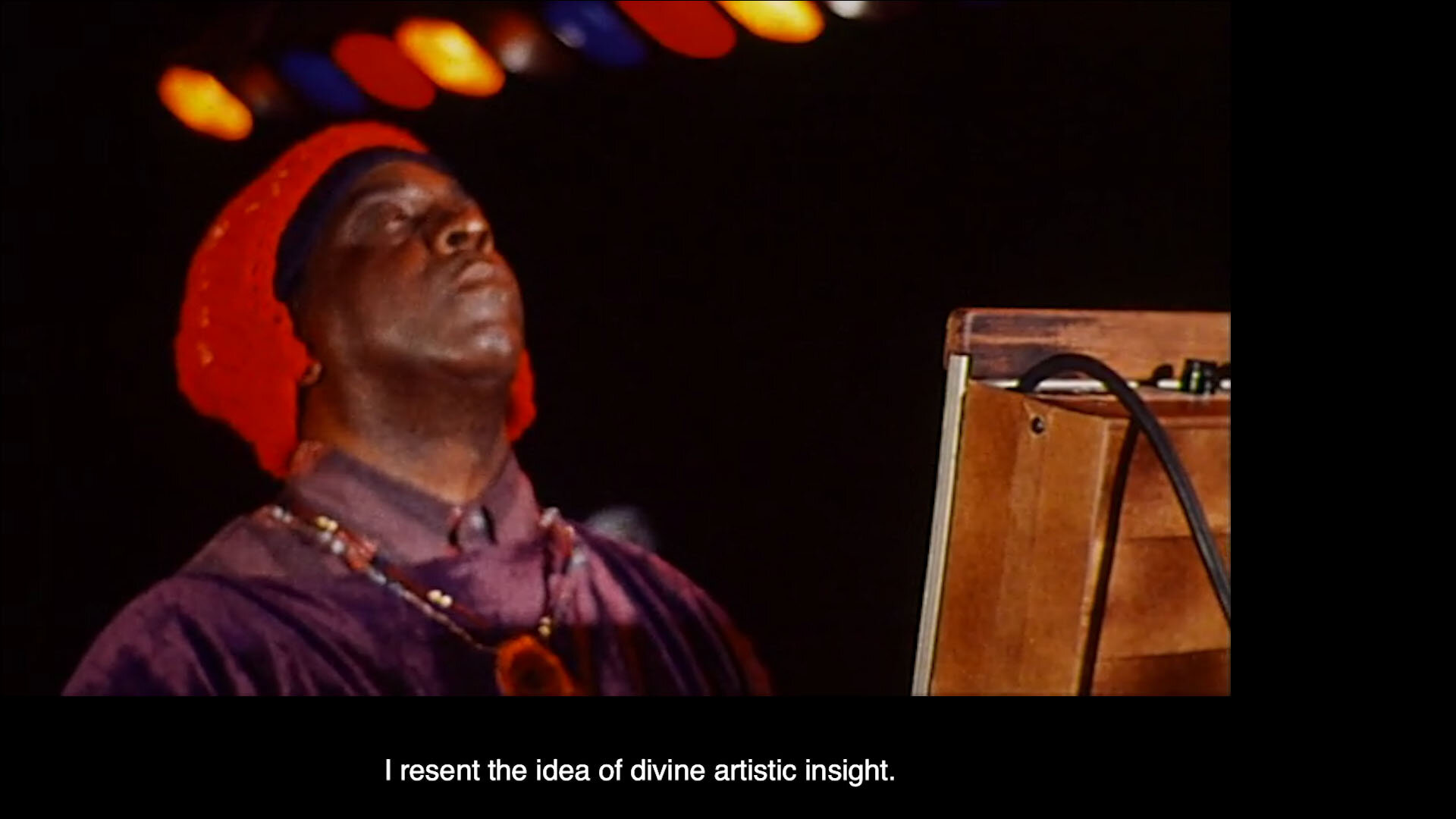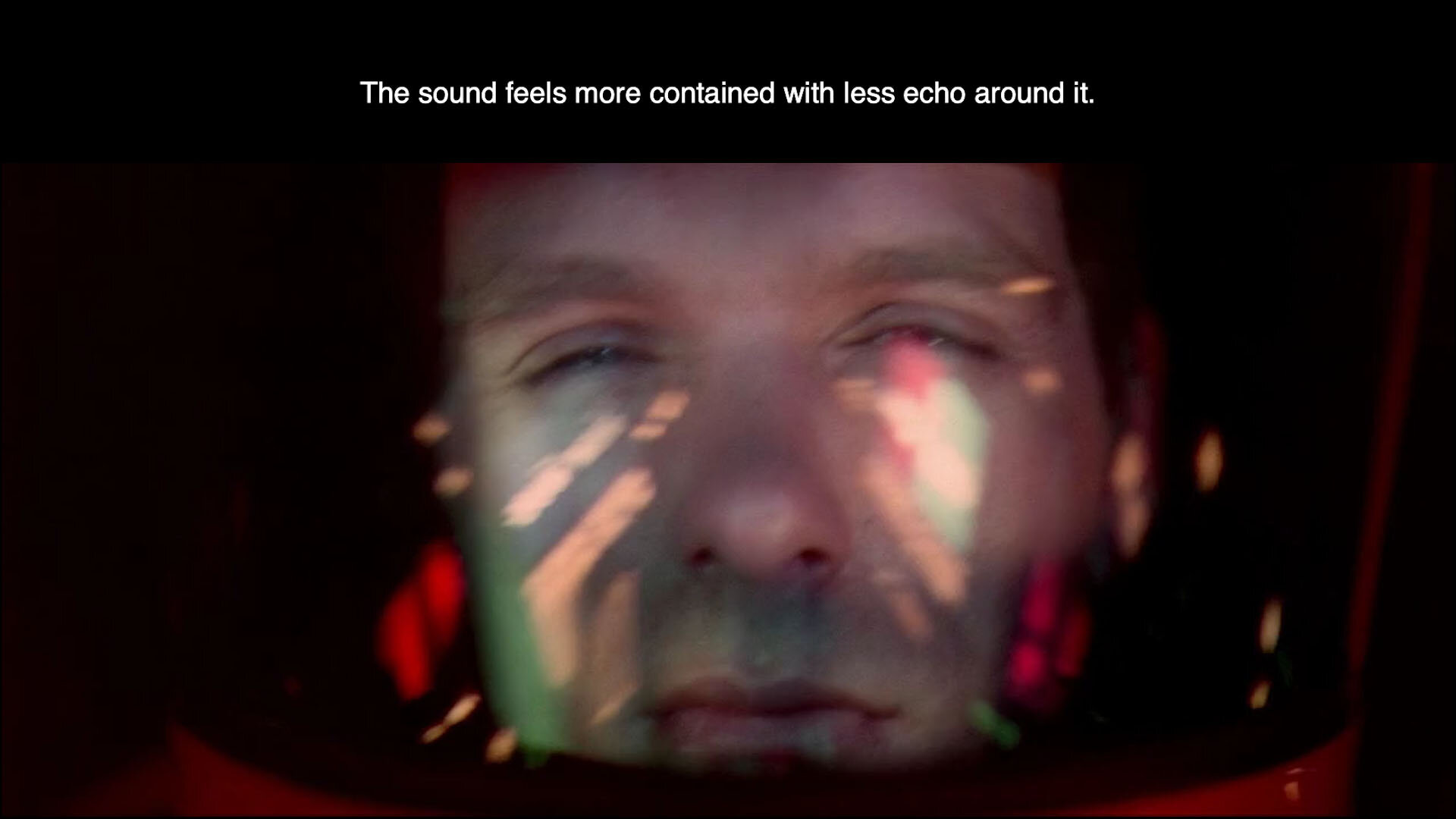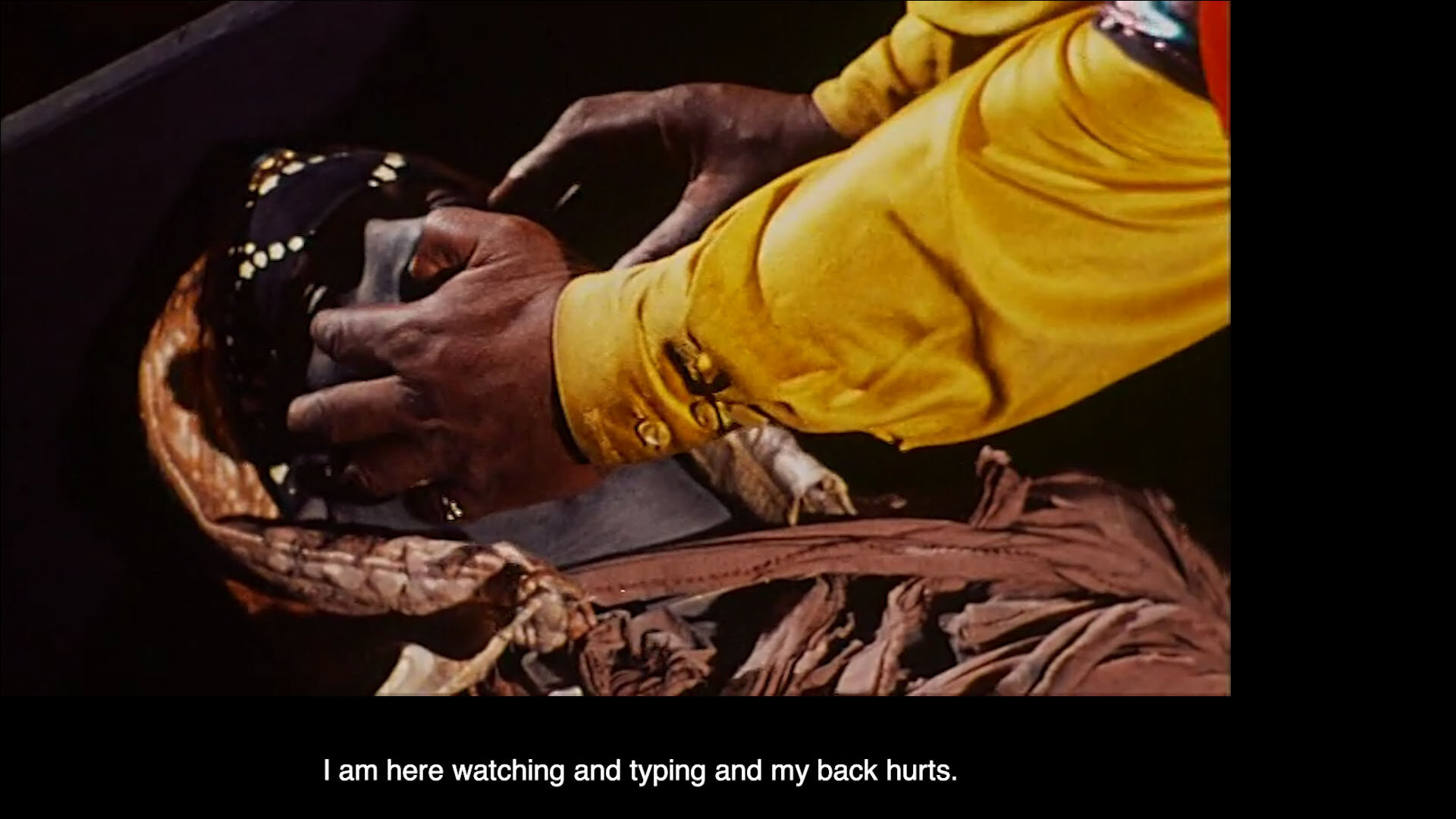Installation Images from New Genres Art Space (2019) and Krannert Art Museum (2019)
Screen stills from Third Space
The film selection for Third Space started with 2001: A Space Odyssey. It was chosen, in part, because the supercomputer in the movie’s plot actually comes from the University of Illinois Urbana Champaign, where I went to graduate school. I created Third Space initially for my MFA thesis show at UIUC. I liked the idea of the projected video and a real physical place from the story plot fusing together. The projection literally “touches” the walls of the building, and a new space is created through this gesture.
Space is the Place was chosen to balance the regal qualities of 2001. The two films, in many ways, represent different pillars of our society— high/low culture, white/black, Hollywood/independently produced. But despite all of this they are eerily similar. They both distinctly utilize sound and music, they are both incredibly misogynistic, and they both grapple with imagined futures. The way they are installed in Third Space, with the two films physically touching in the corner of the room, allows viewers to inhabit the space these two films frame and produce. The films are not the same length, so as they play on loops, they are continuously generating new spaces between them. The captions I’ve added to both films are the anchor in the experience. My own disabled voice is the constant that also stitches the two films together, and it also frames the space created for my viewers to inhabit.
Science fiction is a fascinating lens through which to think about the disabled body. Or maybe, more accurately, the disabled body is a fascinating lens through which to think about science fiction. The disabled body is made prosthetic through mobility devices, artificial limbs, hearing aids, and cochlear implants. I listen to these films through my computer ear (aka my cochlear implant), which is supposed to correct a flaw in my body with a human-made technological device. But there is failure in this action— so much information is unreceived or distorted, and so many barriers left intact. My cochlear implant is an extension of my body, and of myself, and the lines between machine and body, memory, and current sensory input are all mixed up. I don’t know where I end and my computer body begins. I don’t know what I hear and what my computer hears. In a similar vein, watching these films made in our past about a future that we have already surpassed in chronological time mixes up experience. There is the imagined future of the past found in the films, the present that still holds so many traces of things that were also in the past, and another overlap of space created when the imagined future of the films is played in the present.
The above is an excerpt from an interview published in Sixty Inches from Center. You can read the full interview here.



